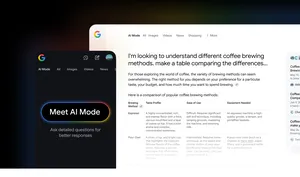AI reveals signs of recovery in areas devastated by bushfires

Editor’s note: This blog post is penned by Dr Emma Spencer, WWF’s Eyes on Recovery Program Coordinator. This investment builds on the many ways Google Australia is supporting Australia’s digital future. In the area of crisis response and conservation, this includes bushfire information on Google Maps, protecting the Great Barrier Reef with the help of AI, and exploring new ways to determine the carbon sequestration potential of seagrass.
The 2019-20 summer bushfires were catastrophic for Australia's wildlife. More than 10 million hectares of land were burned across southern and eastern Australia, and nearly 3 million animals were killed or harmed by the fires.
While many ecosystems are still recovering following this devastating event, we’re seeing signs of hope – with the help of AI technology.
In 2020, we launched Eyes on Recovery, a Google-supported collaboration between WWF-Australia, WWF-US, Conservation International and a range of on-ground land managers and research groups. As part of this project, we deployed wildlife cameras across bushfire-affected regions in Australia and applied Wildlife Insights – a platform powered by AI models developed at Google that draws on machine learning to automatically identify species and track wildlife recovery over time.
Detecting and identifying wildlife using AI helps researchers and conservationists monitor populations and patterns of endangered and invasive species more efficiently and accurately – and relieves them of the laborious and time-consuming process of manually reviewing images, one by one.
Today, with our partners, we’re sharing our progress and unveiling a few adorable and amazing images captured throughout this project.
Since the launch of Eyes on Recovery in 2020, more than 1,100 cameras have been installed in eight fire-affected regions across four states – Queensland, New South Wales, Victoria and South Australia. Collectively, more than 7 million images have been processed using Wildlife Insights, and more than 150 species have been recorded across the project. This includes more common species like eastern grey kangaroos and wombats, but also rarer animals like koalas and spotted-tailed quolls, which can all now be detected with more than 90% accuracy on average. Remarkably, the model has also been able to recognise images of the endangered Kangaroo Island dunnart. This is particularly surprising, as this marsupial mouse-like animal can be very hard to distinguish from other small mammals such as rodents, even by trained researchers.
Caption: Map showing the general locations surveyed by wildlife cameras during Eyes on Recovery

The Google AI model on Wildlife Insights identifies an image of a threatened brush-tailed rock wallaby

When we launched this project, we did not expect to detect so many threatened species. Some of these populations were small before the fires, and many habitats were severely burned. So, we have been overjoyed to see images of surviving koalas wandering through devastated Blue Mountains and South East Queensland. We’ve also spotted previously unrecorded colonies of brush-tailed rock wallabies deep within fire-ravaged habitat across Northern NSW. And, very excitingly, we’ve tracked strong recovery for the endangered Kangaroo Island dunnart, even though almost all of its habitat was impacted by the fires.
Caption: A young koala in the Blue Mountains (credit: Science for Wildlife).
A red-necked wallaby and its joey in the Blue Mountains (credit: Emma Spencer).
The cameras capture a Kangaroo Island dunnart on Kangaroo Island (credit: Kangaroo Island Landscape Board)
The cameras have also captured a rarely witnessed sight – an echidna train – a mating ritual involving multiple males following a female for weeks. The imagery also shows scenes of a mother and joey wombat and two swamp wallabies snuggling!
A wombat mum and joey in the NSW Southern Ranges (credit: Grant Linley)
A rarely photographed echidna train on Kangaroo Island (credit: Kangaroo Island Landscape Board)
Swamp wallabies posing for a hug in the Southern Ranges, NSW (credit: Grant Linley)
With the help of Google AI Platform, Wildlife Insights is allowing the Eyes on Recovery team to process images five to ten times faster than traditional surveys. That means that what usually might take 500 hours to sort, is now being completed in 50 to 100 hours. The technology has also removed the need for researchers to filter out meaningless data, which has been a significant burden on traditional research processes – as 90% of images taken during camera surveys can be false triggers due to moving grass and vegetation. These advances prove the incredible power of this Google AI technology in not only saving effort and project costs, but in also reaching conservation goals faster.
Beyond the warm and fuzzy images, the project has reinforced the threat of invasive species in Australia – as we’ve detected countless images of red foxes, feral cats and pigs, and even a cane toad or two. Invasive species can kill our native wildlife, damage or degrade important habitat, and can also spread disease. While concerning, this information is hugely valuable to help biologists track invasive species population trends, and manage threats.
A red fox in the snow in East Gippsland, Victoria (credit: Southern Ark)
A feral pig captured on camera at a Kangaroo Island monitoring site (credit: Kangaroo Island Landscape Board)
A feral cat with a native rodent in East Gippsland, Victoria (credit: Southern Ark).
The AI model in Wildlife Insights has been trained to identify nearly 1300 species around the world – from elephants to gorillas. For the first time, this collaboration through Eyes on Recovery has allowed us to successfully train the model to detect Australian wildlife.
Given how unique Australian species are, the speed and scale of our progress is exciting and extraordinary. The insights we’ve gathered are already helping land managers build understanding of the species present in a range of environments, to inform critical conservation decisions. We look forward to continuing this work and exploring more ways of developing and adapting new technologies, to help our treasured wildlife survive and thrive.

